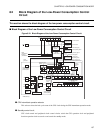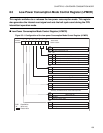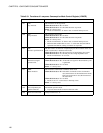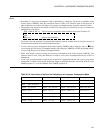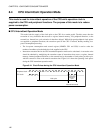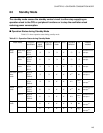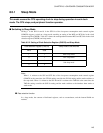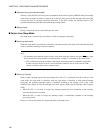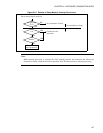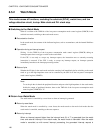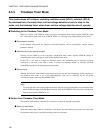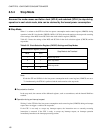
145
CHAPTER 8 LOW-POWER CONSUMPTION MODE
8.5.1 Sleep Mode
This mode causes the CPU operating clock to stop during operation in each clock
mode. The CPU stops, and peripheral function operates.
■ Switching to Sleep Mode
Writing 1 in the SLP bit and 0 in the STP bit of the low-power consumption mode control register
(LPMCR) triggers a switch to a sleep mode according to setting of the MCS and SCS bits in the clock
selection register (CKSCR). Table 8.5-2 shows the correspondence between MCS and SCS bits in the clock
selection register (CKSCR) and sleep mode.
Note:
When 1 is written to the SLP and STP bits of the low-power consumption mode control register
(LPMCR) at the same time, the STP bit setting overrides the SLP bit setting and the mode switches to
the stop mode. When 1 is written to the SLP bit and 0 is written to the TMD bit at the same time, the
TMD bit setting overrides the SLP bit setting and the mode switches to the timebase timer mode or
watch mode.
●
Data retention function
In a sleep mode, the contents of dedicated registers, such as accumulators, and the internal RAM are
retained.
Table 8.5-2 Setting of Clock Selection Register (CKSCR) and Sleep Mode
Clock selection register (CKSCR) Sleep mode to be switched
MCS SCS
1 1 Main sleep mode
0 1 PLL sleep mode
10
Sub-sleep mode
00



